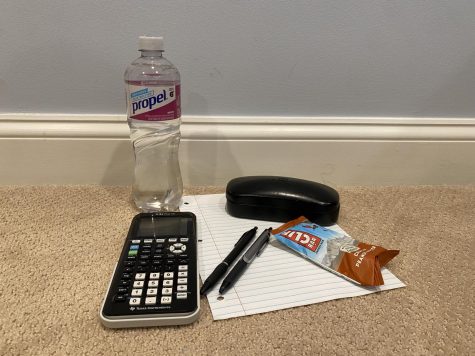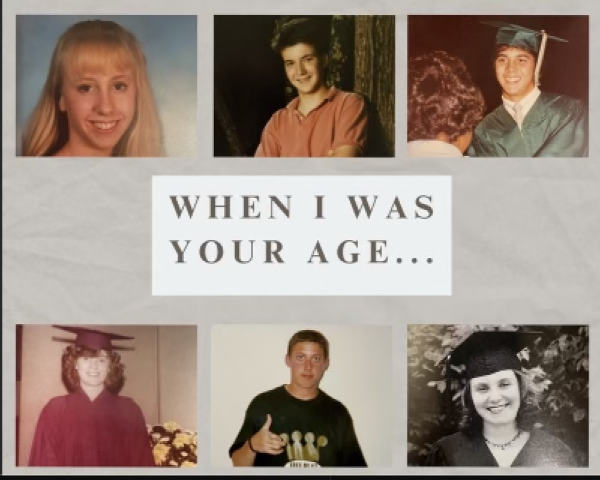Breaking the silence: working to end teen suicide
December 19, 2014
In recent years, it seems that the phrase “teen suicides” is appearing more and more frequently in newspapers, magazines and social media. Along with all this attention, suicide rates are climbing.
Families are devastated and communities are shaken. However, this rapidly increasing rate does not show any signs of stopping.
According to the official webpage of Suicide Awareness Voices of Education organization (SAVE), between 1952 and 1995, suicide in young adults has nearly tripled. Not only that, suicide is the second leading cause of death for young people between the ages of 15 and 24.
These statistics, while alarming, do not begin to describe the grave situation at hand.
According to a nationwide poll conducted by the Centers for Disease Control and Prevention, which surveyed public and private high school students in the US, results showed that 16 percent of students reported seriously considering suicide, 13 percent reported to creating a plan and eight percent reported attempting to take their own life in the 12 months preceding the survey.
To put that in terms of CHS students, that would mean approximately 167 students have attempted to inflict self harm to the extent of death in the past year.
So this begs the question: what can be done to improve this situation?
One of the organizations seeking to prevent these tragedies is UMTTR, founded by CHS 2014 alum Erik Roberts. After the passing of his close friend and CHS student Evan Rosenstock, Roberts decided to make a change by creating UMTTR.
“Unfortunately, it has taken years to stamp out similar social stigmas [like those against depression],” Roberts said. “Today, people are not afraid to wrestle the bottle out of someone’s hand before entering a vehicle, but are still uncomfortable with the idea of talking about depression and the sad repercussions that come with it. If our community wants to stop the increasing numbers, we have to be more open to discussing.”
Unfortunately, many teenagers fear being ostracized and therefore see high school as a time to fit in, rather than to speak out.
“People with depression often fear social alienation,” Roberts said. “We are afraid that people will think we are weird or that something is wrong with us and then they’ll abandon us. This is sometimes a gross reality that needs to stop. People avoid talking about charged topics unless they have reason to believe that what they say will be agreeable. What we need instead is open, honest dialogue in which both people with and without depression can freely talk about how they think others can help.”
However, in order to prompt discussion about depression, students must be educated on the issue of what depression is.
According to National Institute of Mental Health, depression is when feelings of periodic sadness begin to interfere with daily life and seriously affect one’s personality, thoughts and emotions.
To a certain extent, this is caused by a chemical imbalance in the brain. However, often misconstrued, depression is not caused by one single chemical being too high or too low, but instead, millions of chemical reactions that regulate everything from mood to perceptions. With this level of complexity, chemical imbalances are more common than most people think.
“That [chemical] imbalance, I think may exist—in varying degrees—in everyone, and can be exacerbated by negative events, trauma or anything of that nature,” Roberts said. “While depression is a product of factors beyond our immediate control, preventing depression and helping people overcome it is completely within our control. We can stack the deck such that the positive thoughts and those chemicals in the brain that induce those feelings begin to overtake the negative ones.”
There is a difference, however, between being suicidal and experiencing suicidal thoughts. There are numerous external factors that can worsen the pressure put upon teenagers.
Consuming the majority of teenagers’ lives, the education system puts a great deal of stress on students. Especially as standards rise, students are expected to balance perfect grades along with multiple extracurricular activities in order to remain competitive for college.
“So much stress has been put on the future, kids forget to enjoy the present,” said senior Elliot Thaker, who is an active member of UMTTR. “I know that sounds clichè, but that’s the easiest way to explain it.”
With so much stress, when kids start to fall behind, it can be easy to lose sight and feel like your future is crumbling when it’s not.
Culture is another external influence. Songs such as Lana Del Rey’s “Summertime Sadness” beautify suicide in a way similar to Emily Bronte’s Wuthering Heights, a novel extensively studied in AP Literature.
Social media and news also popularize suicidal thoughts, which, while increasing awareness of the topic, can also create a kind of chain effect.
“They gain a lot of attention, in communities, schools, even on the news,” Thaker said. “Obviously it is important to get the news that it happened out, but once somebody commits suicide, everybody talks about all the good things they did: the attention is all positive. So kids who are already depressed get the idea that they’ll be hailed as the person they don’t see themselves as–so they do it, resulting in a domino effect.”
There is a fine line between being suicidal and having suicidal thoughts. However both situations can be improved through open conversation between peers, teachers and families.
According to Roberts, as a community, we need to help each other and show each other that we all care.
“I have other friends who have been through depression, and I just offer to talk to them whenever they need [it],” senior Sara Chang said. “And tell them you care because that’s forgotten a lot of the time—how much other people care.”
According to Help Guide, a non-profit organization, ways to help loved ones who are going through this dark time period include:
- Letting the person know that you care, and that they are not alone in this
- Avoiding saying that it is all in the person’s head
- Being there for the other person
- Talking to the counselor
- Reporting it in anonymously
- Maryland Suicide Hotline: 1-800-422-0009
- Text Crisis (National Suicide Hotline): 1-800-273-8255
- Telling a teacher
It must be understood that depression is a serious condition that cannot just be “fixed.” Hiding the problem also will not make it go away.
Being there, not necessarily saying anything, is always the best way to show people that we care.












